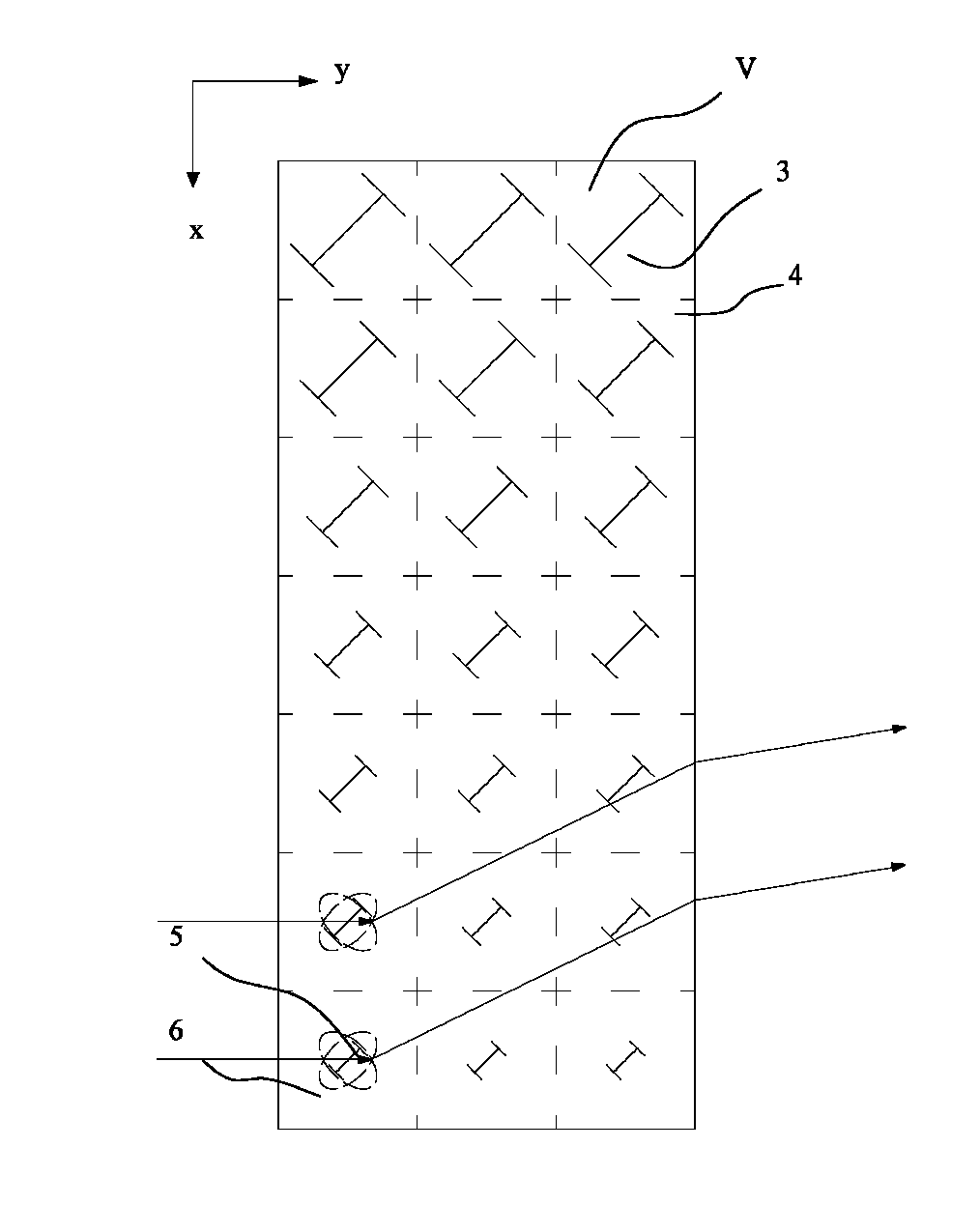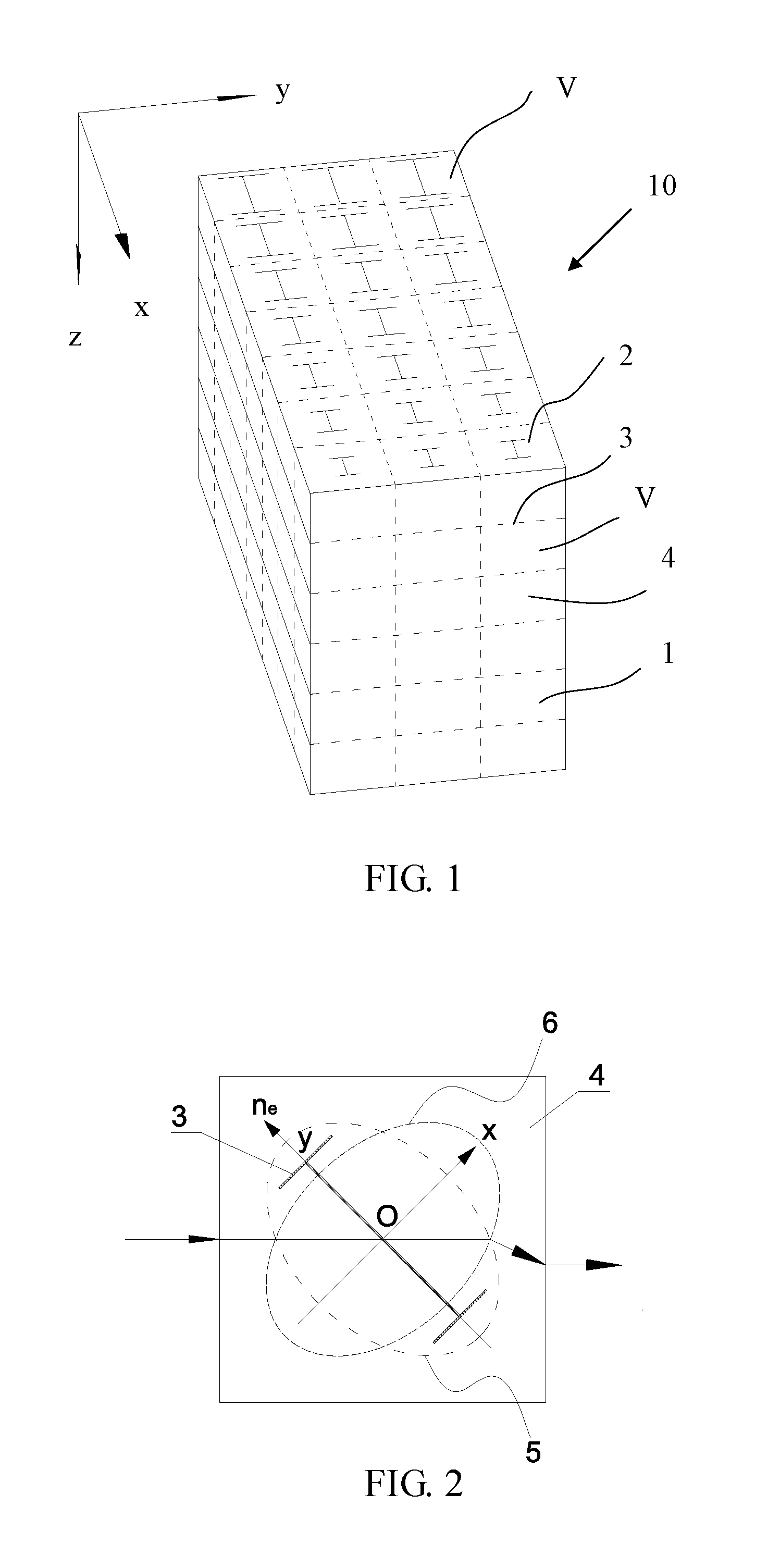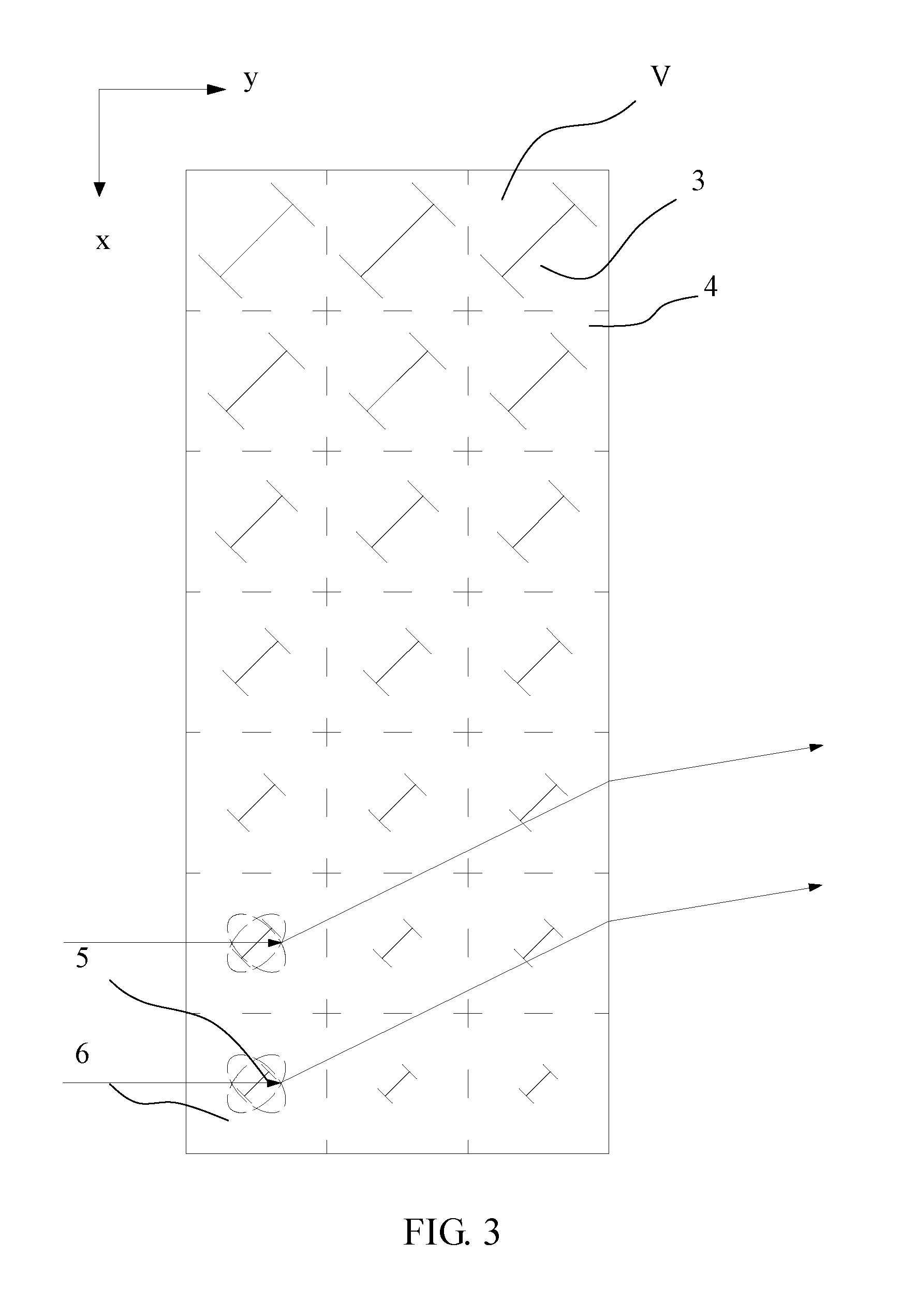Metamaterial for deflecting an electromagnetic wave
a technology of electromagnetic waves and metal materials, applied in shielding materials, cross-talk/noise/interference reduction, high-frequency circuit adaptations, etc., can solve the problems of electromagnetic wave deflecting, electromagnetic wave inertia of refractive indices, and inability to arbitrarily design the refractive indices of currently available materials
- Summary
- Abstract
- Description
- Claims
- Application Information
AI Technical Summary
Benefits of technology
Problems solved by technology
Method used
Image
Examples
first embodiment
[0063]FIG. 3 is a schematic structural view of a functional layer 10 of a metamaterial according to the present disclosure. The man-made microstructures 3 are each a metal microstructure of an “I” form. The man-made microstructures 3 on each of the sheet layers 1 of the functional layer 10 are arranged in an array, and all have the same pattern of the “I” form. The man-made microstructures 3 arranged in the y direction decrease in size gradually, while the man-made microstructures 3 arranged in the x direction remain constant. As is known from experiments, for metal microstructures of the same pattern, the dielectric constants exhibited in the same unit cell is directly proportional to the sizes thereof. Therefore, in this embodiment, the regular distribution in size of the man-made microstructures actually also represents the regular distribution of the dielectric constants of the unit cells 4, and given that the magnetic permeability remains unchanged, also represents the regular ...
third embodiment
[0080]Referring to FIG. 7, FIG. 8 and FIG. 9, FIG. 7 is a schematic view of a cubic structure unit of the metamaterial for deflecting an electromagnetic wave according to the present disclosure, FIG. 8 is a schematic structural view of a metamaterial formed by stacking cubic structure units as shown in FIG. 7 in the x-y-z directions, and FIG. 9 is a front view of the metamaterial shown in FIG. 8. As shown in FIG. 9, the cubic structure unit comprises a substrate 11 and a pore 20 formed in the substrate 11. The pore 20 may be either a through-hole or not, but occupies a certain volume in the substrate 11 in both cases. In the metamaterial of this embodiment, a ratio of the volume of the pore 20 formed in the substrate 11 to the volume of the substrate 11 increases gradually in the y direction and remains constant in the x direction and the z direction, so the refractive indices decrease gradually in the y direction. Therefore, after the electromagnetic wave propagates through the met...
fourth embodiment
[0086]FIG. 11 is a front view of the metamaterial for deflecting an electromagnetic wave according to the present disclosure. In this embodiment, the ratio of the volume of the pore(s) 20 to the volume of the corresponding cubic structure unit remains constant for all the cubic structure units. The number, the size and the cross-sectional pattern of the pores 20 may be either the same or different for each of the cubic structure units so long as the ratio of the volume of the pore(s) 20 to the volume of the corresponding cubic structure unit remains constant for all the cubic structure units. In this embodiment, a case in which each of the cubic structure units has only one pore 20 and all the pores have the same size and the same circular cross-sectional pattern will be described as a preferred implementation. In such an implementation, the y direction is still taken as the first direction, and only a case in which the refractive indices decrease gradually in the y direction will b...
PUM
 Login to View More
Login to View More Abstract
Description
Claims
Application Information
 Login to View More
Login to View More - R&D
- Intellectual Property
- Life Sciences
- Materials
- Tech Scout
- Unparalleled Data Quality
- Higher Quality Content
- 60% Fewer Hallucinations
Browse by: Latest US Patents, China's latest patents, Technical Efficacy Thesaurus, Application Domain, Technology Topic, Popular Technical Reports.
© 2025 PatSnap. All rights reserved.Legal|Privacy policy|Modern Slavery Act Transparency Statement|Sitemap|About US| Contact US: help@patsnap.com



